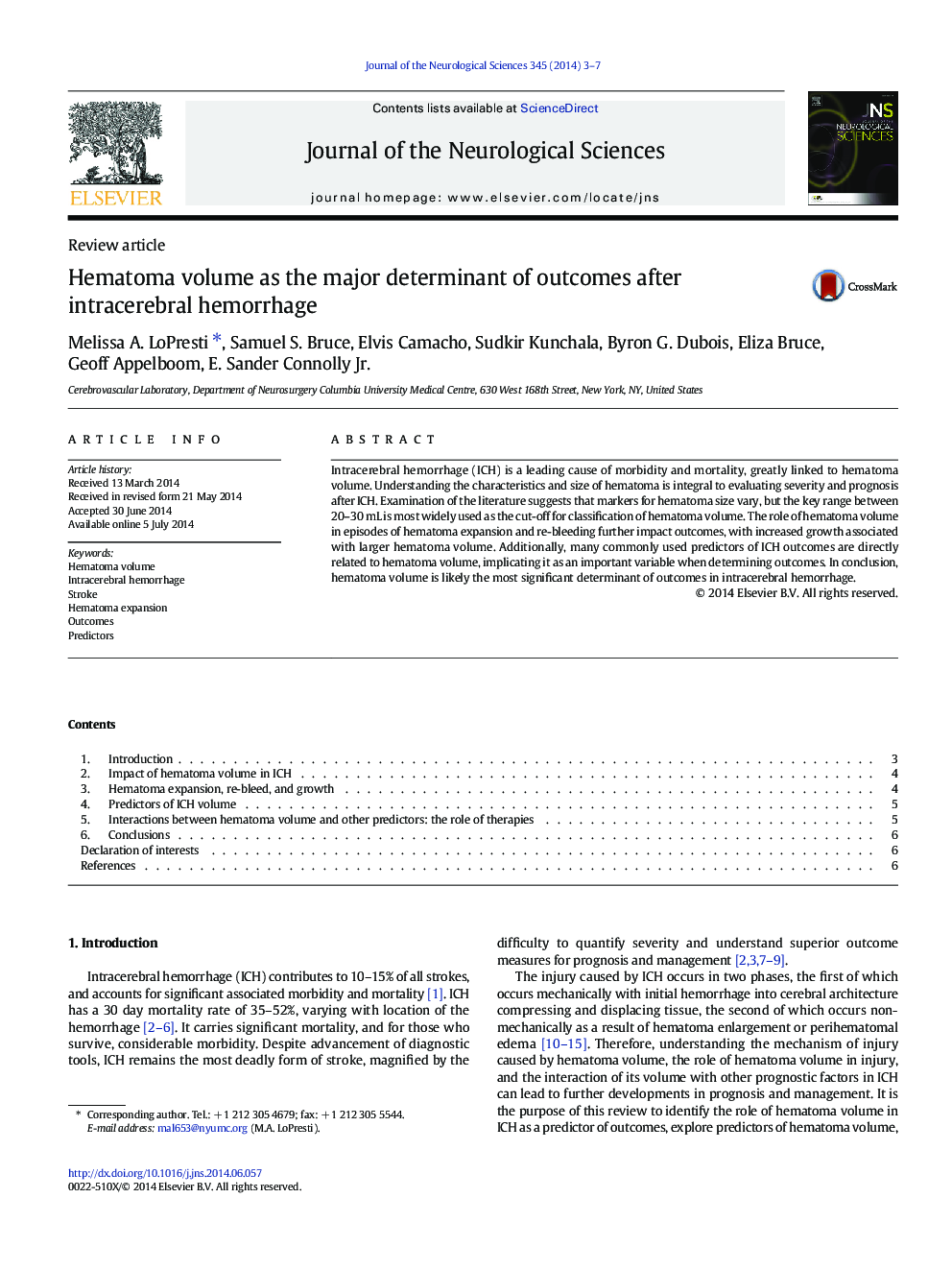| Article ID | Journal | Published Year | Pages | File Type |
|---|---|---|---|---|
| 1913339 | Journal of the Neurological Sciences | 2014 | 5 Pages |
•Many predictors of intracerebral hemorrhage outcomes related to hematoma volume.•The cut-off for hematoma volume, to be considered large, ranged between 20 and 30 mL.•Hematoma volume and re-bleed, growth, or expansion are directly related.•The association of hematoma volume and growth indentifies areas for intervention.•Hematoma volume is perhaps the most important variable when determining outcomes.
Intracerebral hemorrhage (ICH) is a leading cause of morbidity and mortality, greatly linked to hematoma volume. Understanding the characteristics and size of hematoma is integral to evaluating severity and prognosis after ICH. Examination of the literature suggests that markers for hematoma size vary, but the key range between 20–30 mL is most widely used as the cut-off for classification of hematoma volume. The role of hematoma volume in episodes of hematoma expansion and re-bleeding further impact outcomes, with increased growth associated with larger hematoma volume. Additionally, many commonly used predictors of ICH outcomes are directly related to hematoma volume, implicating it as an important variable when determining outcomes. In conclusion, hematoma volume is likely the most significant determinant of outcomes in intracerebral hemorrhage.
